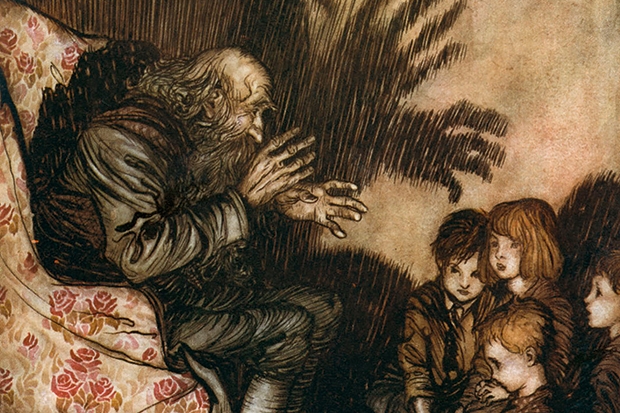Children’s fantasy literature has never been just one thing. Animal fables, folk and fairy tales were not originally intended for a child audience, while the relatively recent phenomenon that is entertaining (rather than principally didactic) children’s literature has many origins that are not fantastic at all. Michael Levy and Farah Mendlesohn draw a line — well, many lines — from these assorted beginnings to today’s world, in which fantasy specifically aimed at young readers is a large and noisy part of the publishing market, but still very far from a single coherent one.
Much of the category’s mutation over the centuries can be explained contextually: political pressures, economic changes, advances in gender politics and shifts in attitudes towards religion all play a role. These include loss of an empire, the aftermath of a brutal war, the anxieties of a nation seeking to define itself (think of L. Frank Baum’s America, or T.H. White’s Britain) and crucially, unsurprisingly, how we think of children, and what we expect from them. Levy and Mendlesohn give a convincing explanation for a distinctively post-second-world-war literature where children are unprotected, where they have agency and responsibility, where they face true and terrible evil. As time goes on, the stakes continue to rise. Compare Nesbit’s world to Narnia — do our young protagonists have a small, limited quest to complete, or do we expect them to save the world?
Meanwhile children’s literature in general has stretched through adolescence, over roughly the same period that saw the requirement for young people to remain in full-time education extended. As the role of the teenager in society changed, young adult books took form as a significant category, with fantasy playing an increasingly dominant and sophisticated role within it.
The forces driving the genre’s development are often external ones, then. But there are also key texts that changed it from within, pushing it in new directions: Lord of the Rings (European, medievalist and with high stakes), which redefined fantasy for a new American generation; and Pullman and Rowling, who demonstrated to a nervous publishing industry that there was a market for such ill-favoured things. Baum’s Oz marks a sea-change in fantasy for turn-of-the-century America; The Hobbit does the same in late interwar England. The various loosely defined categories of fantasy writing — destinarian quest narratives, portal narratives, the mythopoeic, the heroic — often meet most originally in these seminal works.
Then there’s E.B. White (with fantasy that follows some of the rules of realism) and Washington Irving (whose ‘fantasy’ element proves a hoax); and David Almond, Diana Wynne Jones and dozens more. Which books are chosen for scrutiny and which aren’t inevitably determines how clear and meaningful the threads running through this history seem. No work of this kind can be comprehensive, and however impressive the evident scope of the authors’ knowledge and its critical underpinning, such a book must always marshal its examples for the clearest case. Generalisations will seem more brittle or tendentious the closer we come to the present (overarching clarity is elusive without sufficient distance) but in this multi-strand subject the authors have managed to convey a satisfying sense of — albeit partly illusory — coherence to this broad and fascinating story.
Naturally, space permitting, it might have been broader still. Everyone will have favourites they’ll wish had been included (I’d love to know where the authors would position Norton Juster’s The Phantom Tollbooth, or Patrick Ness’s A Monster Calls). There are adjacent fields left unexplored that could prove fertile: how, for instance, are our encounters with these novels informed by younger books? (Do most children not encounter the feeling of a fantasy world through, say, Where the Wild Things Are?) There’s a whole other book to be written about the reader’s experience.
First Light, meanwhile, is all about the reader. Forty-three of them, to be precise, who have come together to mark the 80th birthday of the great Alan Garner. Garner’s own writing (fantasy and not) is incomparable, rich in history, folklore, myth and language, deep-rooted in a distinctive landscape with irresistible numinous power. Under Erica Wagner’s editorship, First Light’s distinguished contributors share what reading Garner has given them; their responses, as various as you could wish for, are personal, challenging, generous and insightful, as good reading is, and infused with the personalities and preoccupations of the readers.
Most of these readers are themselves writers, and Garner’s potency is revealed in how profoundly he has helped to shape the imaginations that came after him, from John Burnside to Helen Macdonald, Neil Gaiman to Ali Smith. In a now notorious blogpost, a private school head teacher recently argued that children shouldn’t read fantasy, lest these ‘addictive’ and ‘sensational’ books damage their ‘sensitive subconscious brains’. It’s a silly argument, mostly, but judging by the contributions to this rich and rewarding volume, he may have a point. The effects of expertly crafted fantasy, both these books remind us, are unnervingly hard to resist.






Comments